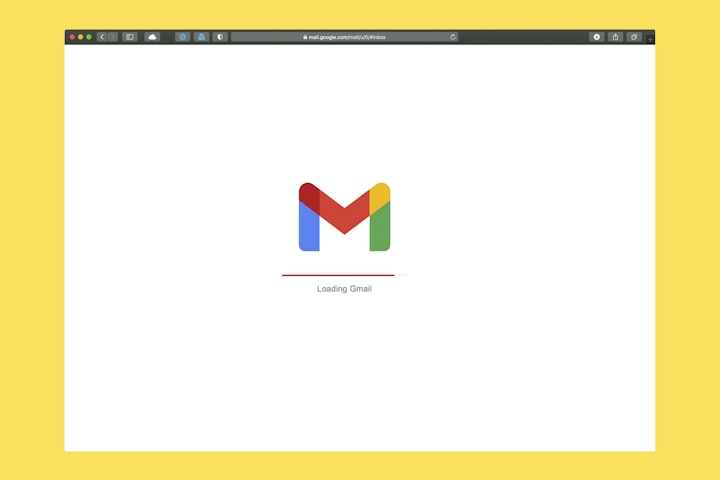What is Email Marketing? Definition, Strategies, & Tools to Get Started
Email Marketing

What is Email Marketing?
Email marketing is a digital marketing strategy that involves sending commercial messages, such as promotions, advertisements, or newsletters, to a targeted audience through email. The goal of email marketing is to build a relationship with the audience, keep them engaged, and ultimately drive sales or other desired actions.
Email marketing campaigns can be automated or manual, and they can be sent to a segmented or a general audience. Email marketers use various techniques to optimize their campaigns, such as creating personalized content, using eye-catching subject lines, A/B testing, and tracking metrics such as open rates, click-through rates, and conversion rates.
Email marketing is a cost-effective way to reach a large audience, and it has been proven to be one of the most effective forms of digital marketing. However, it is important for marketers to obtain permission from recipients before sending them emails, and to comply with regulations such as CAN-SPAM and GDPR.
Why Email Marketing Is Important
1. Direct communication with customers: Email is a direct communication channel between businesses and their customers. With email marketing, businesses can send personalized messages to their subscribers, which can help build stronger relationships and increase customer loyalty.
2. Cost-effective: Email marketing is a cost-effective way to reach a large audience compared to other forms of marketing, such as print or TV advertising.
3. High ROI: Email marketing has a high return on investment (ROI). According to some studies, the average ROI for email marketing is $42 for every $1 spent.
4. Targeted marketing: Email marketing allows businesses to target specific segments of their audience based on factors such as age, gender, location, interests, and behavior. This can help increase the effectiveness of email campaigns.
5. Measurable results: Email marketing provides measurable results through open rates, click-through rates, conversion rates, and other metrics. This allows businesses to track the success of their campaigns and make data-driven decisions.
6. Scalability: Email marketing can be scaled to meet the needs of businesses of all sizes, from small startups to large enterprises.
The Benefits of Email Marketing
Email marketing offers numerous benefits for businesses, including:
1. Increased sales: Email marketing can help businesses increase sales by driving traffic to their website, promoting products and services, and offering special deals and promotions.
2. Improved customer relationships: Email marketing provides a direct line of communication between businesses and their customers. By sending personalized and relevant messages, businesses can build stronger relationships with their audience, leading to increased customer loyalty and retention.
3. Cost-effective: Email marketing is a cost-effective way to reach a large audience compared to other forms of marketing, such as print or TV advertising.
4. Targeted marketing: Email marketing allows businesses to target specific segments of their audience based on factors such as age, gender, location, interests, and behavior. This can help increase the effectiveness of email campaigns.
5. Measurable results: Email marketing provides measurable results through open rates, click-through rates, conversion rates, and other metrics. This allows businesses to track the success of their campaigns and make data-driven decisions.
6. Increased brand awareness: Email marketing can help businesses increase their brand awareness by sharing valuable content with their subscribers and promoting their brand across multiple channels.
7. Improved customer retention: Email marketing can help businesses keep their existing customers engaged by providing them with relevant and personalized content, special offers, and exclusive deals.
How to Do Email Marketing
Here are the general steps to follow for creating an effective email marketing campaign:
1. Define your audience: Identify your target audience and segment them based on factors such as demographics, behavior, and interests.
2. Choose an email marketing platform: There are many email marketing platforms available, such as Mailchimp, Constant Contact, and Campaign Monitor. Choose a platform that fits your needs and budget.
3. Build your email list: Create a signup form on your website or social media pages to collect email addresses from your audience. You can also offer incentives, such as a free guide or discount, to encourage people to sign up.
4. Plan your email campaign: Determine the purpose of your email campaign and what type of content you will send, such as newsletters, promotional emails, or event invitations. Plan the frequency and timing of your emails to avoid overwhelming your audience or sending too few emails.
5. Design your emails: Create visually appealing emails that are consistent with your brand. Use a clear and attention-grabbing subject line to entice your audience to open your email.
6. Write engaging content: Create content that is relevant, informative, and valuable to your audience. Use a clear and concise writing style and include calls to action to encourage your audience to take action.
7. Test and optimize: Use A/B testing to test different elements of your emails, such as subject lines, content, and images. Analyze your email metrics, such as open rates, click-through rates, and conversion rates, to optimize your email campaign.
8. Follow best practices: Comply with email marketing regulations, such as CAN-SPAM and GDPR. Provide a clear unsubscribe link and honor unsubscribe requests promptly.
10 Strategies for Email Marketing Success
Here are 10 strategies for email marketing success:
1. Build a quality email list: Focus on building an email list of engaged and interested subscribers. Use double opt-in to ensure that subscribers have given permission to receive your emails.
2. Segment your email list: Divide your email list into smaller segments based on demographics, behavior, and interests. This allows you to send targeted and relevant messages to each segment.
3. Use a clear and attention-grabbing subject line: Your subject line should clearly communicate the content of your email and be attention-grabbing enough to entice your subscribers to open it.
4. Create engaging content: Provide valuable and informative content that resonates with your audience. Use a clear and concise writing style and include calls to action to encourage your subscribers to take action.
5. Use personalization: Use your subscriber's name and other personal details to make your emails more personalized and relevant to their needs and interests.
6. Design for mobile devices: Ensure that your emails are optimized for mobile devices, as more and more people access their emails on smartphones and tablets.
7. Test and optimize: Use A/B testing to test different elements of your emails, such as subject lines, content, and images. Analyze your email metrics, such as open rates, click-through rates, and conversion rates, to optimize your email campaign.
8. Use automation: Use automation to send personalized and targeted emails to subscribers based on their behavior and preferences. This can include welcome emails, abandoned cart emails, and birthday emails.
9. Monitor and respond to feedback: Monitor subscriber feedback and respond promptly to complaints or unsubscribe requests. Use feedback to improve your email marketing campaign.
10. Comply with regulations: Comply with email marketing regulations, such as CAN-SPAM and GDPR. Provide a clear unsubscribe link and honor unsubscribe requests promptly.
Get Started With Email Marketing
To get started with email marketing, follow these steps:
1. Choose an email marketing platform: There are many email marketing platforms available, such as Mailchimp, Constant Contact, and Campaign Monitor. Choose a platform that fits your needs and budget.
2. Build your email list: Create a signup form on your website or social media pages to collect email addresses from your audience. You can also offer incentives, such as a free guide or discount, to encourage people to sign up.
3. Choose a template or design your own: Most email marketing platforms offer templates that you can use to create professional-looking emails. Alternatively, you can design your own email using a drag-and-drop editor.
4. Create your email content: Determine the purpose of your email and what type of content you will send, such as newsletters, promotional emails, or event invitations. Write engaging and informative content that is relevant to your audience.
5. Test your email: Use the preview feature to test your email on different devices and email clients. Check for spelling and grammar errors and ensure that all links are working.
6. Send your email: Choose the appropriate audience segment and schedule your email for delivery. Send a test email to yourself and a few colleagues to ensure that everything looks and works as expected.
7. Analyze your results: After sending your email, analyze your email metrics, such as open rates, click-through rates, and conversion rates. Use this data to optimize your email marketing campaign.
About the Creator
Prakashraj P
My name is Prakashraj P, and I'm passionate about blogging, conent creating and designing. I'm currently working as a Software Developer.





Comments
There are no comments for this story
Be the first to respond and start the conversation.